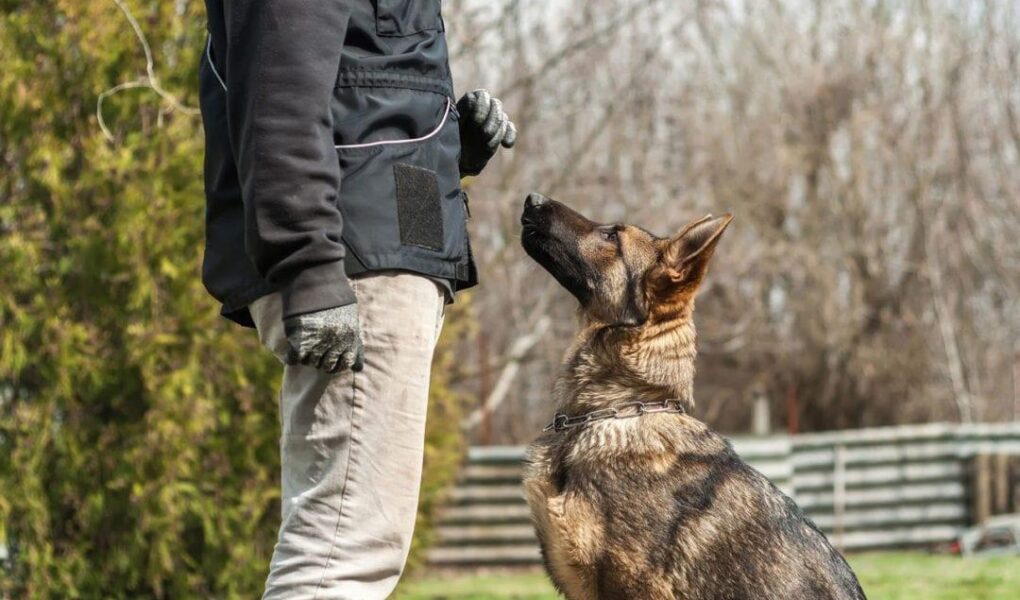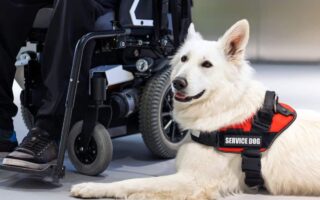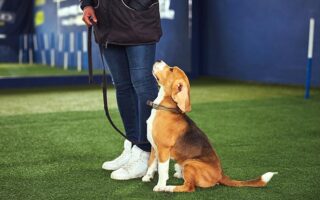Title: Unlocking the Secrets to Effective Dog Training
Introduction:
Training a dog is more than just a series of commands; it’s the foundation of a strong bond between human and canine. Each wag of a tail, every joyful bark, and the soft look in a dog’s eyes speaks volumes about the connection forged through mutual understanding and respect. As more families welcome furry companions into their homes, the quest for the best training methods has never been more relevant. With a plethora of techniques, theories, and philosophies on dog training available today, it can often feel overwhelming for pet owners trying to determine the most effective approach. In this article, we will explore various training strategies, drawing on expert insights and practical tips to help you navigate the journey of educating your dog. Whether you’re a new puppy parent or looking to refine the skills of an older companion, there is a path that can lead to a harmonious and well-mannered furry friend. Let’s embark on this journey together and discover the best ways to train your dog for a lifetime of joy and companionship.
Table of Contents
- Understanding Canine Behavior to Enhance Training Success
- Effective Techniques for Positive Reinforcement
- Building a Structured Routine for Consistency and Discipline
- Socialization Strategies for a Well-Rounded Dog
- Q&A
- Future Outlook
Understanding Canine Behavior to Enhance Training Success
To achieve the best results in dog training, it is essential to understand the innate behaviors and instincts of canines. Recognizing that dogs are pack animals helps in shaping your training approach. Social structure, communication, and dominance play critical roles in their interactions. For instance, using positive reinforcement aligns with their natural inclination to seek approval and rewards from their pack leader. Observing your dog’s body language can unveil their emotional state, guiding you to adjust your training techniques accordingly. Consider the following aspects:
- Body language: Posture, tail position, and ear orientation can offer insights into your dog’s mood.
- Vocalizations: Barks, growls, and whines convey different messages about their feelings and desires.
- Play behavior: Engaging playfully with your dog can foster a positive association with training.
Moreover, tailoring your training sessions to fit your dog’s unique personality can enhance their learning experience. Some dogs may thrive in structured environments, while others benefit from a more relaxed setting. Variability in training methods, duration of sessions, and types of rewards can significantly impact effectiveness. By being observant and flexible, you can develop a deeper connection with your dog through tailored training plans. A comparison table below illustrates the varying approaches to suit different temperaments:
| Dog Temperament | Recommended Training Method | Ideal Session Length |
|---|---|---|
| Energetic | Interactive Play Training | 15-20 minutes |
| Calm | Instructional Sessions | 30-45 minutes |
| Inquisitive | Puzzle and Problem-Solving Tasks | 20-30 minutes |
Effective Techniques for Positive Reinforcement
Positive reinforcement is an engaging and effective method for training dogs, fostering a bond based on trust and mutual respect. This approach revolves around rewarding desirable behaviors, which encourages dogs to repeat those actions. Here are some key strategies to employ:
- Immediate Rewards: Always reward your dog right after they exhibit the desired behavior, to create a clear connection between action and reward.
- Variety of Rewards: Use a mix of treats, praise, and playtime to keep your dog motivated and excited about training sessions.
- Consistent Commands: Utilize consistent verbal cues for commands so your dog understands what is expected; clarity is essential.
- Gradual Challenges: Start with simple commands and gradually increase the difficulty to build your dog’s confidence and skills.
To track progress and reinforce learning, consider maintaining a training log. This can help identify successful techniques and areas needing improvement. A sample tracking table might look like this:
| Date | Command Learned | Reward Used | Notes |
|---|---|---|---|
| 2023-10-01 | Sit | Treat | Responded well; needs more practice. |
| 2023-10-02 | Stay | Praise | Good progress; observed duration improvement. |
| 2023-10-03 | Come | Playtime | Excited to come; effective reward. |
Building a Structured Routine for Consistency and Discipline
Establishing a routine is paramount when it comes to training your dog effectively. A structured schedule helps dogs understand expectations while reinforcing their behavioral patterns. By implementing specific training sessions, you can create a rhythm that both you and your dog can follow. Consider breaking down training into manageable segments such as:
- Morning Walks: Energizing your dog with exercise to start the day.
- Midday Training: Brief sessions focusing on commands and tricks.
- Afternoon Playtime: Reinforcing positive behavior through fun activities.
- Evening Calm Down: Wind down with quiet time, consolidating training.
Consistency is key—ensure that everyone in the household follows the same routine. Additionally, tracking your dog’s progress with a simple reward system can enhance their motivation. Use a visual table to note milestones achieved, which can help both you and your dog stay on track:
| Week | Command | Progress | Reward |
|---|---|---|---|
| 1 | Sit | 80% Success | Treat |
| 2 | Stay | 60% Success | Playtime |
| 3 | Come | 100% Success | Favorite Toy |
Socialization Strategies for a Well-Rounded Dog
To cultivate a well-rounded dog, socialization should be a key component of their training regimen. Start early by introducing your puppy to a variety of people, environments, and other animals. This exposure can help alleviate fear and anxiety in unfamiliar situations. Consider incorporating the following strategies into your routine:
- Frequent Outdoor Walks: Regular outings provide new sights, sounds, and scents.
- Playdates: Set up playdates with friendly, vaccinated dogs to foster positive interactions.
- Puppy Classes: Enroll in classes that emphasize socialization in a controlled environment.
- Public Outings: Take your dog to pet-friendly stores, parks, or events.
As your dog matures, ongoing socialization remains vital. The aim is to expose them to various situations that they may encounter in daily life. Utilize the following techniques to further enhance their social skills:
- Controlled Introductions: Gradually introduce new stimuli, such as different people or other pets.
- Positive Reinforcement: Use treats and praise to reward calm behavior in new scenarios.
- Change of Environment: Rotate the places you visit to keep experiences fresh and engaging.
Q&A
Q&A: The Best Way to Train a Dog
Q: What is the most effective method for training a dog?
A: The most effective method is positive reinforcement. This approach encourages desirable behavior by rewarding your dog with treats, praise, or playtime whenever they follow a command correctly. This not only builds a strong bond between you and your dog but also makes the training experience enjoyable for both.
Q: How do I start training my dog?
A: Begin with simple commands like “sit,” “stay,” and “come.” Choose a quiet environment free from distractions, gather your treats, and use a cheerful tone. Begin by demonstrating the command, guiding them if necessary, and then rewarding them immediately when they comply. Consistency, patience, and repetition are key!
Q: How often should I train my dog?
A: Short, frequent training sessions are more effective than long, infrequent ones. Aim for 5-10 minute sessions, two to three times a day. This keeps your dog engaged and helps reinforce their learning without overwhelming them.
Q: What should I do if my dog is not responding to commands?
A: If your dog isn’t responding, it may be due to a lack of motivation, distractions, or confusion about what is expected. Ensure you’re using high-value treats that excite your dog. Also, remove any distractions from the environment. If they’re still struggling, simplify the command or revisit the basics to strengthen their understanding.
Q: Is it okay to use punishment during training?
A: It’s generally not recommended to use punishment as it can lead to fear and anxiety, negatively impacting your dog’s behavior. Instead, focus on redirecting unwanted behavior and reinforcing positive actions. If your dog acts out, gently guide them toward the desired behavior and reward them for it.
Q: How can I keep my dog motivated during training?
A: Keep the training sessions fun and engaging! Incorporate play, mix in different commands, and periodically change rewards to keep your dog guessing. Using toys or varied treats as rewards can also maintain interest. Ensuring your dog views training as a fun activity is essential for long-term success!
Q: When should I start training my puppy?
A: You can start training your puppy as soon as you bring them home, typically around 8 weeks old. Early socialization and basic obedience training are crucial during this period. Introducing them to new experiences and basic commands sets a solid foundation for their future behavior.
Q: How can I socialize my dog effectively?
A: Socialization is best done gradually and positively. Expose your dog to different environments, people, and other animals in a controlled manner. Always reward them with treats or praise during these experiences to create positive associations. Group classes or playdates with well-mannered dogs can also be beneficial.
Q: What if my dog is older and never received training?
A: It’s never too late to train an older dog! The principles of positive reinforcement apply regardless of age. Start slow, be patient, and adjust your expectations. Older dogs may take a bit longer to learn, but with consistent practice, they can certainly acquire new skills and behaviors!
Q: Do I need professional help for training?
A: While many dog owners successfully train their pets on their own, professional help can be valuable, especially for challenging behaviors or specific training goals. Consider consulting a professional trainer or attending obedience classes if you feel overwhelmed or want more structured guidance.
With dedication, patience, and a sprinkle of creativity, you can empower your furry friend to become a well-behaved companion while enjoying the journey together!
Future Outlook
training your dog is not just about teaching commands; it’s an opportunity to build a lasting bond with your furry friend. By incorporating patience, consistency, and positive reinforcement into your training sessions, you’ll foster an environment of trust and understanding. Remember that every dog is unique, and what works for one may not work for another. Embrace the journey, stay flexible in your methods, and celebrate the small victories along the way. With dedication and love, you can transform training time into a rewarding experience that shapes not only a well-behaved companion but also a cherished friendship that lasts a lifetime. Now, grab those treats, get ready to have some fun, and embark on this exciting adventure with your canine companion!



